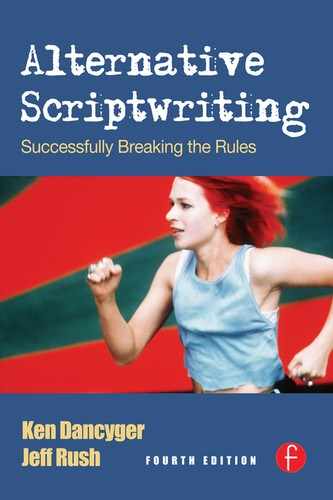0%
37Chapters
0-1Hours read
0kTotal Words
Book Description
Alternative Scriptwriting 4E is an insightful and inspiring book on screenwriting concerned with challenging you to take creative risks with genre, tone, character, and structure. Concerned with exploring alternative approaches beyond the traditional three-act structure, Alternative Scriptwriting first defines conventional approach, suggests alternatives, then provides case studies. These contemporary examples and case studies demonstrate what works, what doesn't, and why.Because the film industry as well as the public demand greater and greater creativity, one must go beyond the traditional three-act restorative and predictable plot to test your limits and break new creative ground. Rather than teaching writing in a tired formulaic manner, this book elevates the subject and provides inspiration to reach new creative heights.
Table of Contents
- Cover
- Halftitle
- Title
- Copyright
- Dedication
- Contents
- Preface
- Acknowledgments for the Fourth Edition
- Acknowledgments
- Chapter 1: Beyond the Rules
- Chapter 2: Structure
- Chapter 3: Critique of Restorative Three-Act Form
- Chapter 4: Counter-Structure
- Chapter 5: More Thoughts on Three Acts: Fifteen Years Later
- Chapter 6: Narrative and Anti-Narrative: The Case of the Two Stevens: The Work of Steven Spielberg and Steven Soderbergh
- Chapter 7: Working with Genre I
- Chapter 8: Working with Genre II: The Melodrama and the Thriller
- Chapter 9: Working Against Genre
- Chapter 10: Genres of Voice
- Chapter 11: The Non-Linear Film
- Chapter 12: Reframing the Active/Passive Character Distinction
- Chapter 13: Stretching the Limits of Character Identification
- Chapter 14: Main and Secondary Characters
- Chapter 15: Subtext, Action, and Character
- Chapter 16: The Primacy of Character Over Action: The Non-American Screenplay
- Chapter 17: The Subtleties and Implications of Screenplay Form
- Chapter 18: Agency and the Other
- Chapter 19: Character, History, and Politics
- Chapter 20: Tone: The Inescapability of Irony
- Chapter 21: Dramatic Voice/Narrative Voice
- Chapter 22: Digital Features
- Chapter 23: Writing the Narrative Voice
- Chapter 24: Rewriting
- Chapter 25: Adaptations from Contemporary Literature
- Chapter 26: Personal Scriptwriting: The Edge
- Chapter 27: Personal Scriptwriting: Beyond the Edge
- Index
